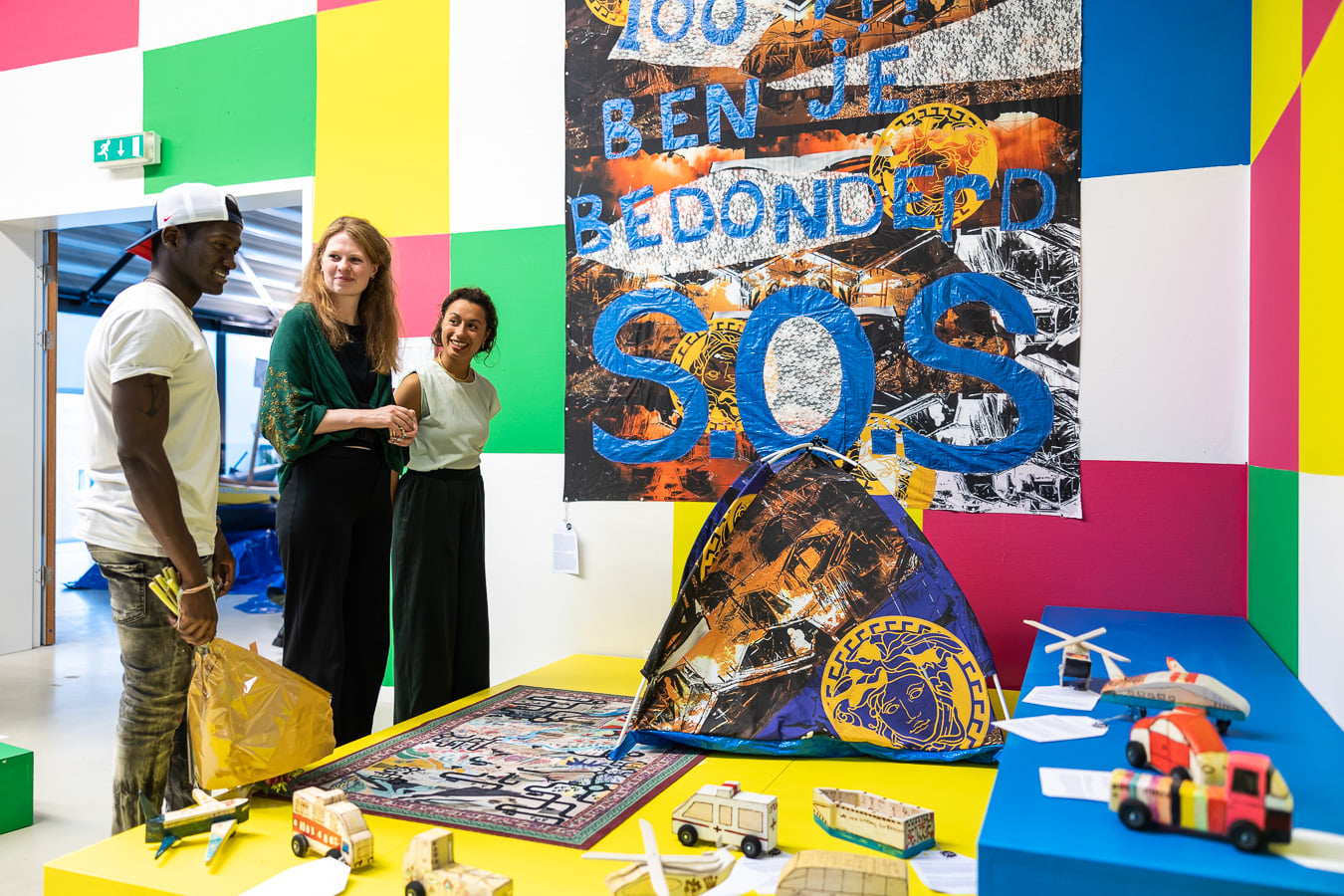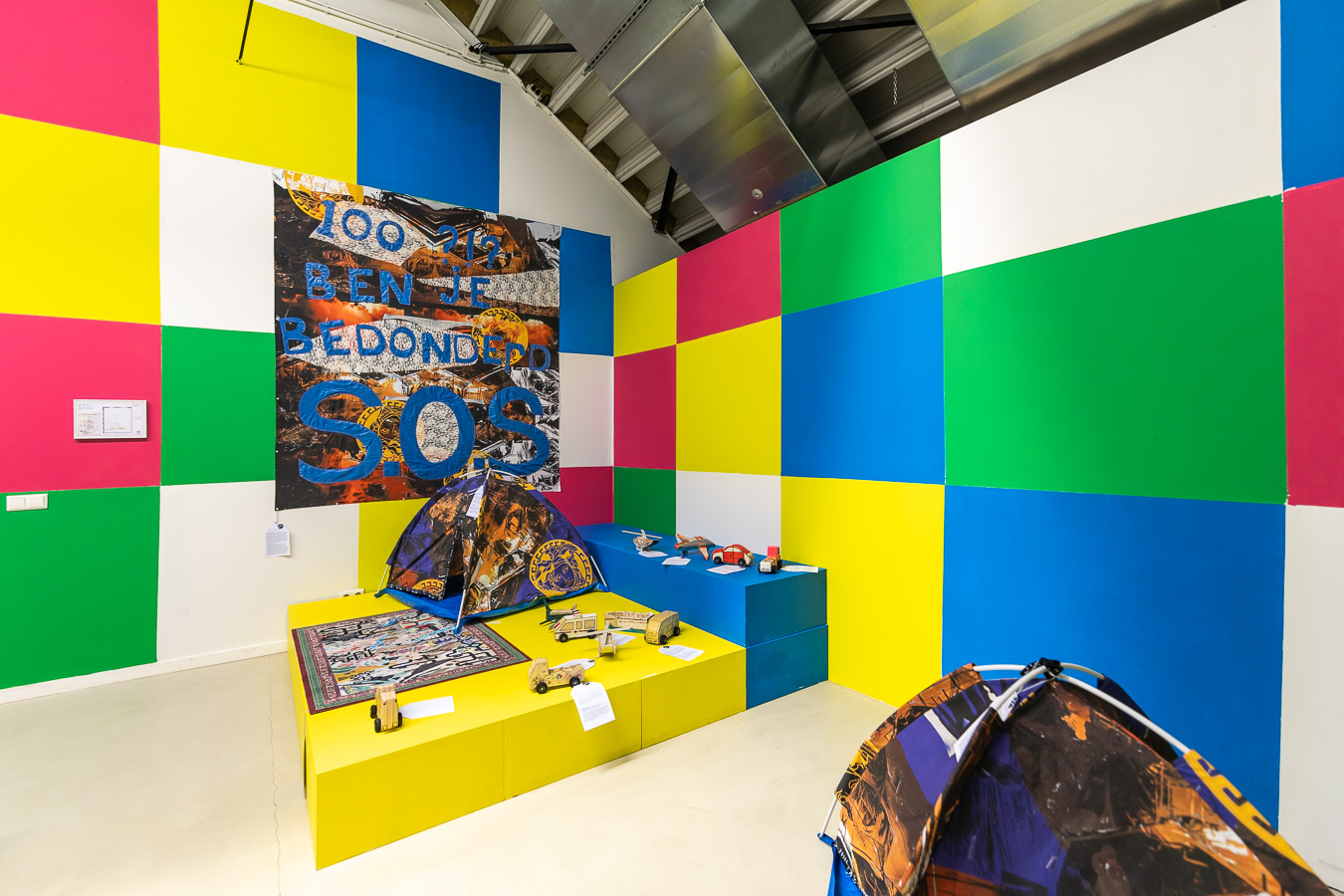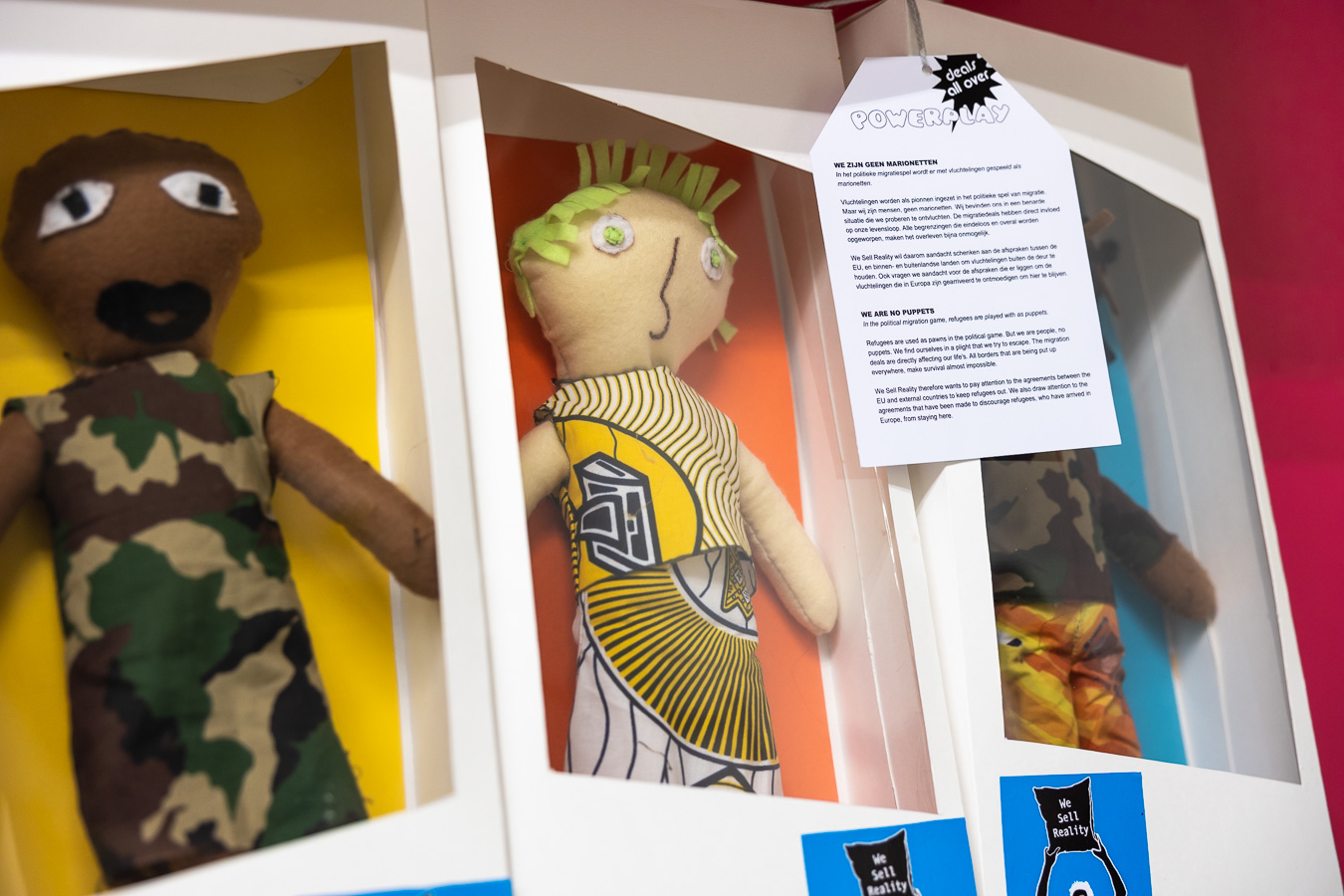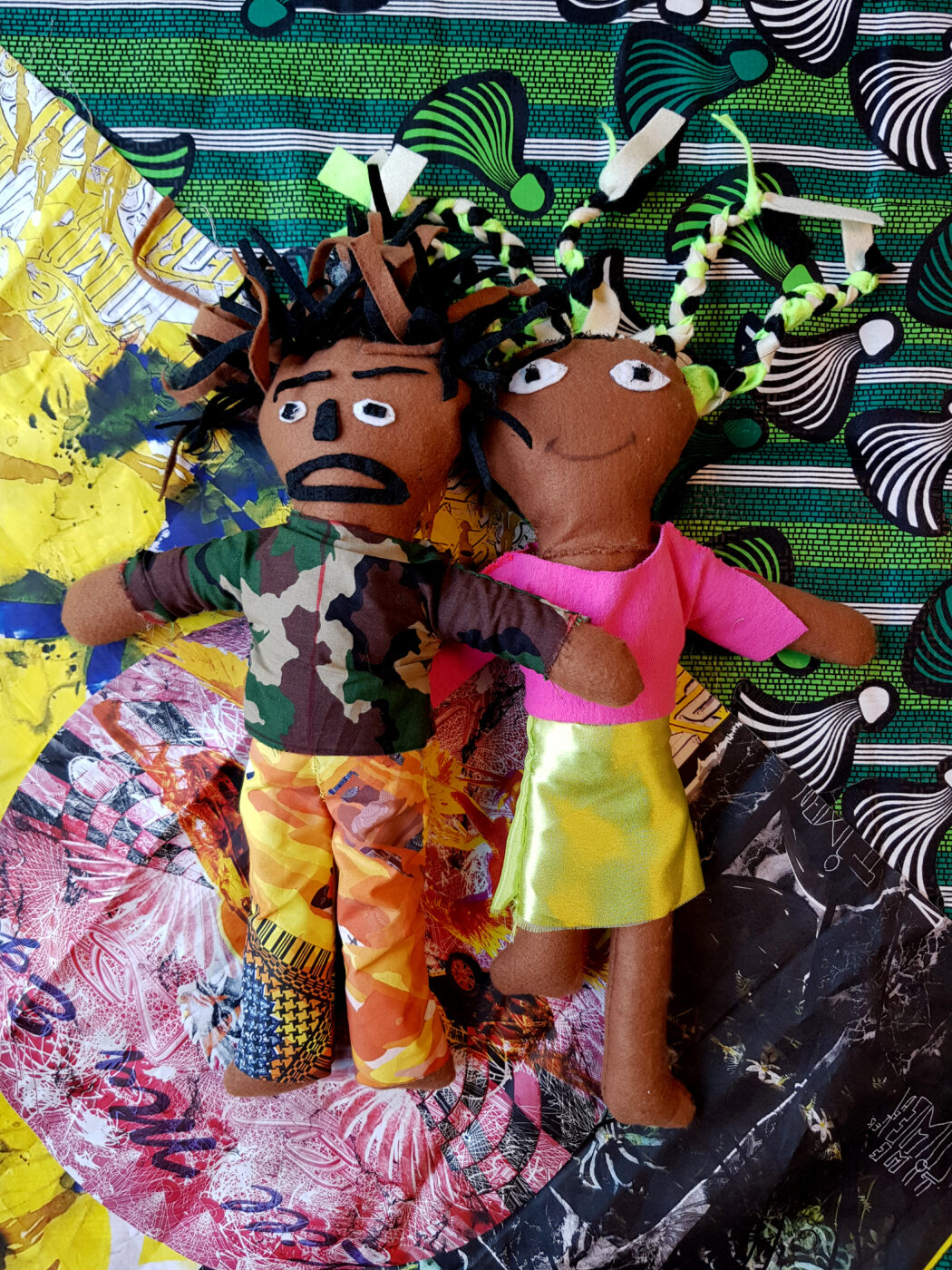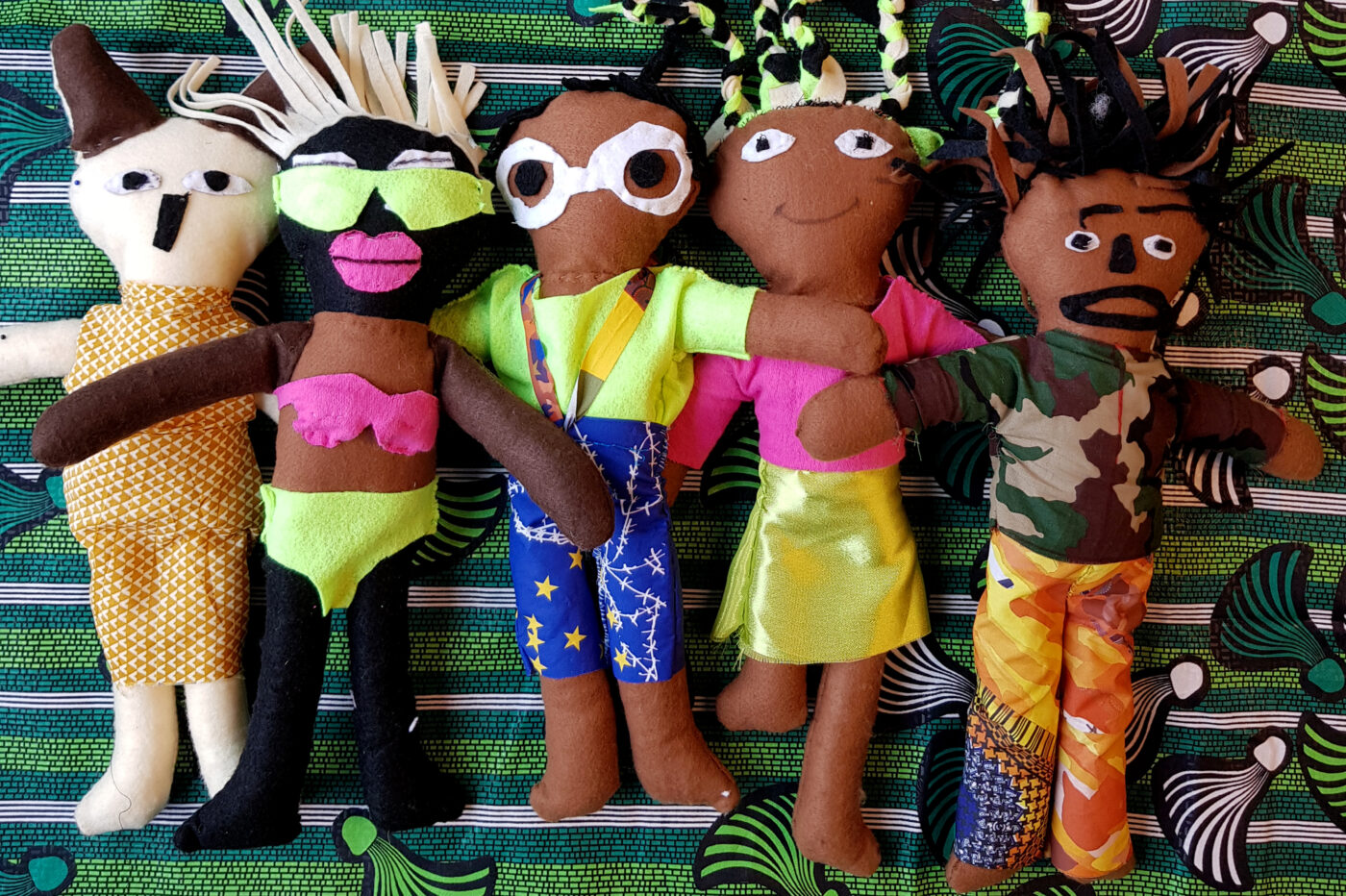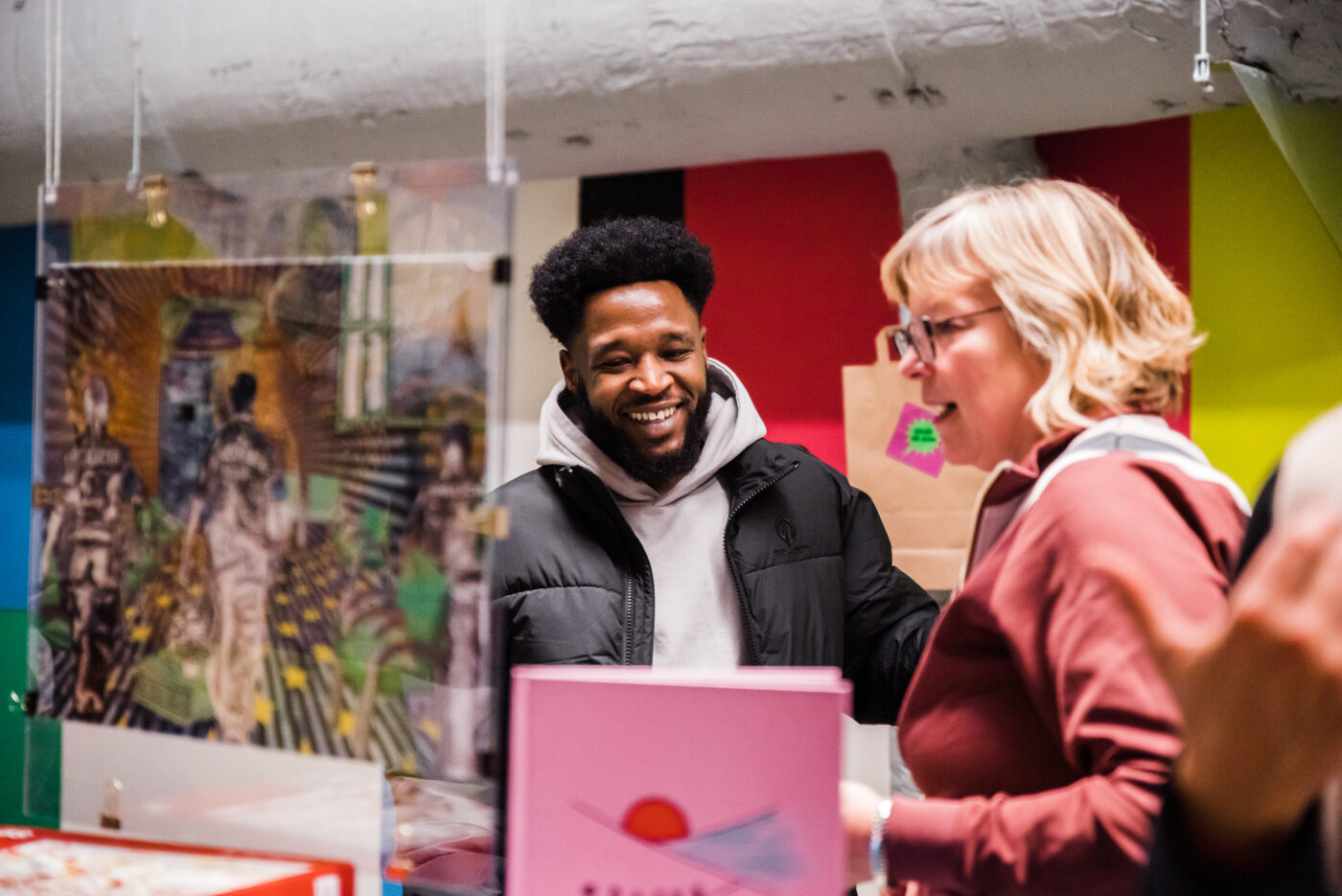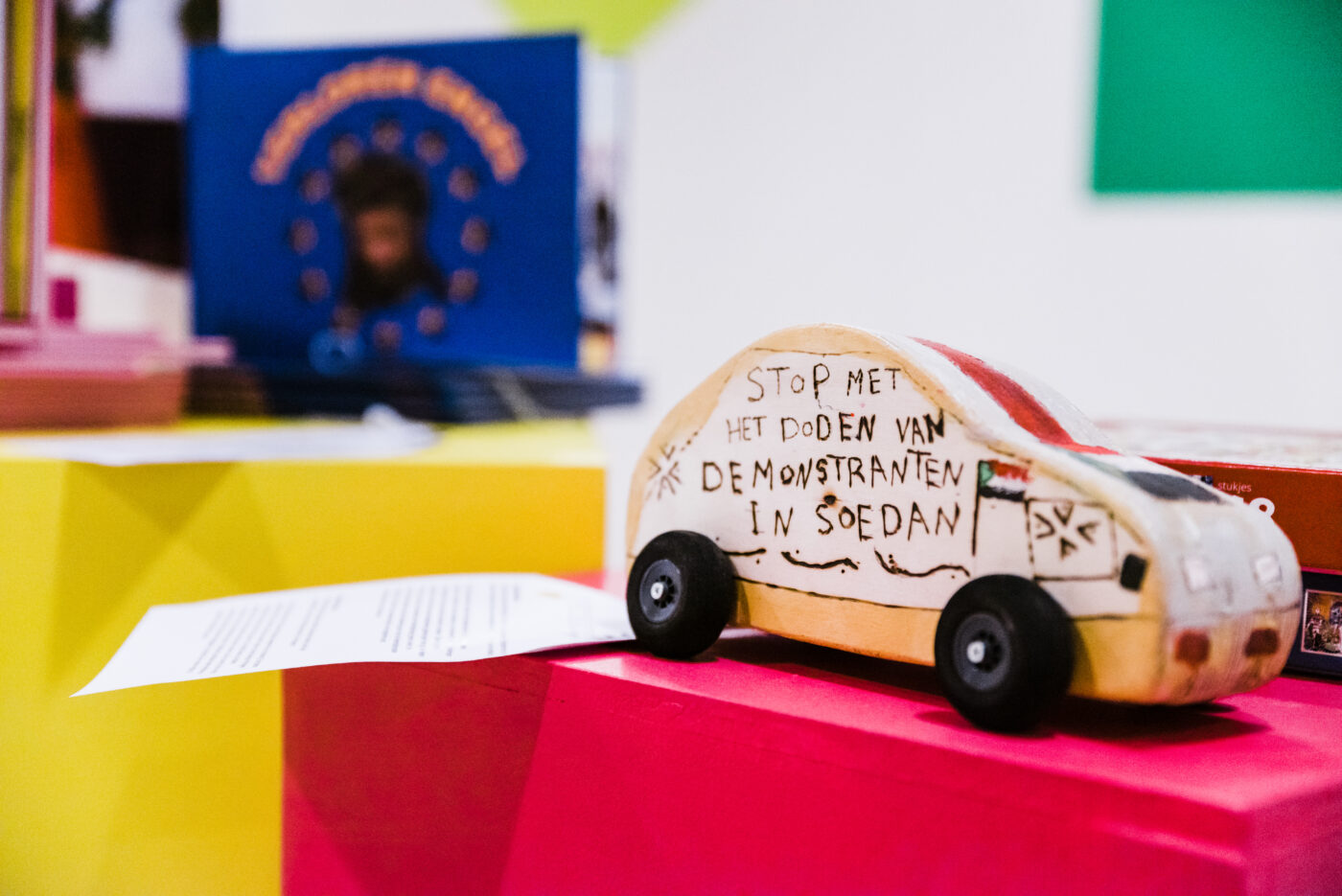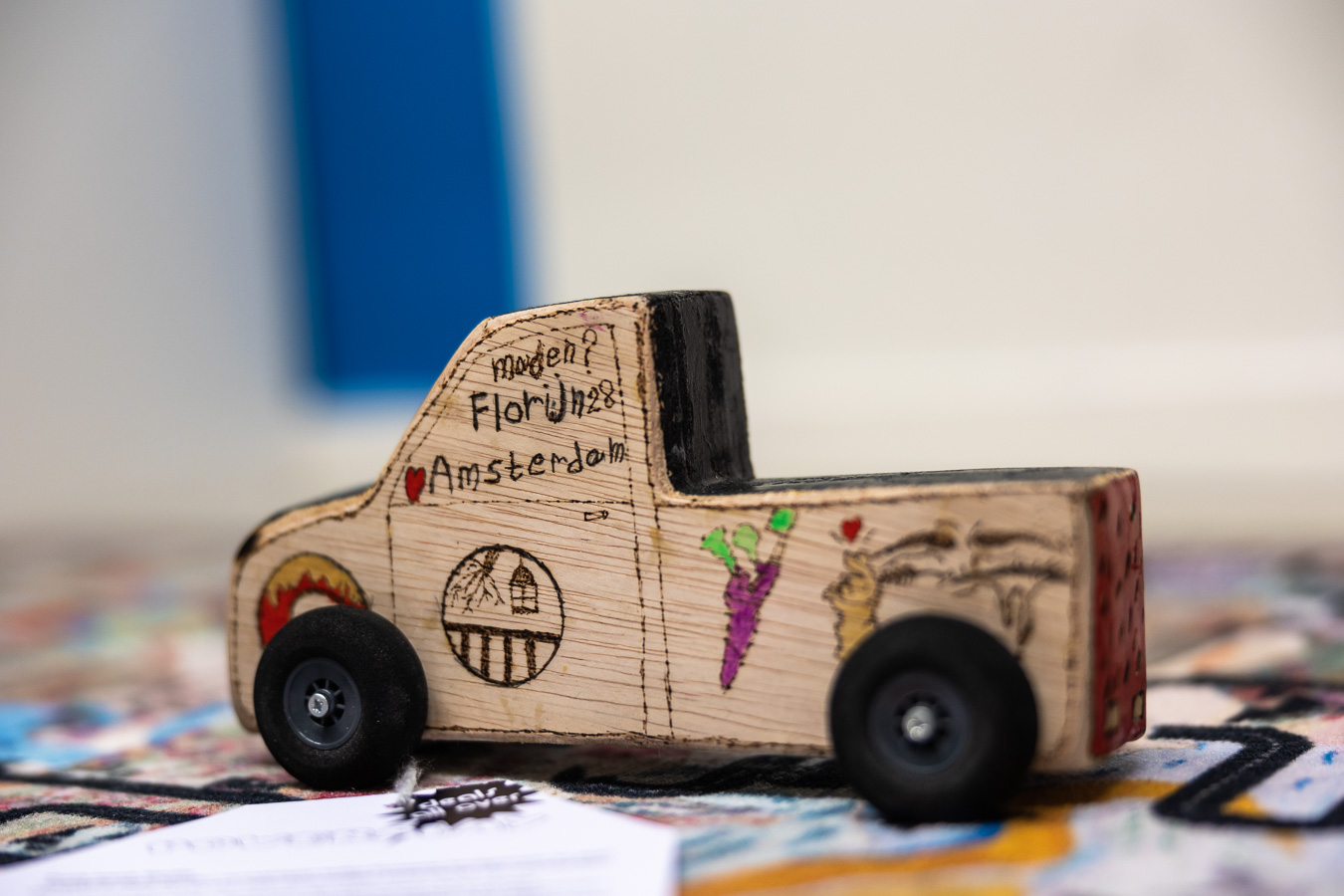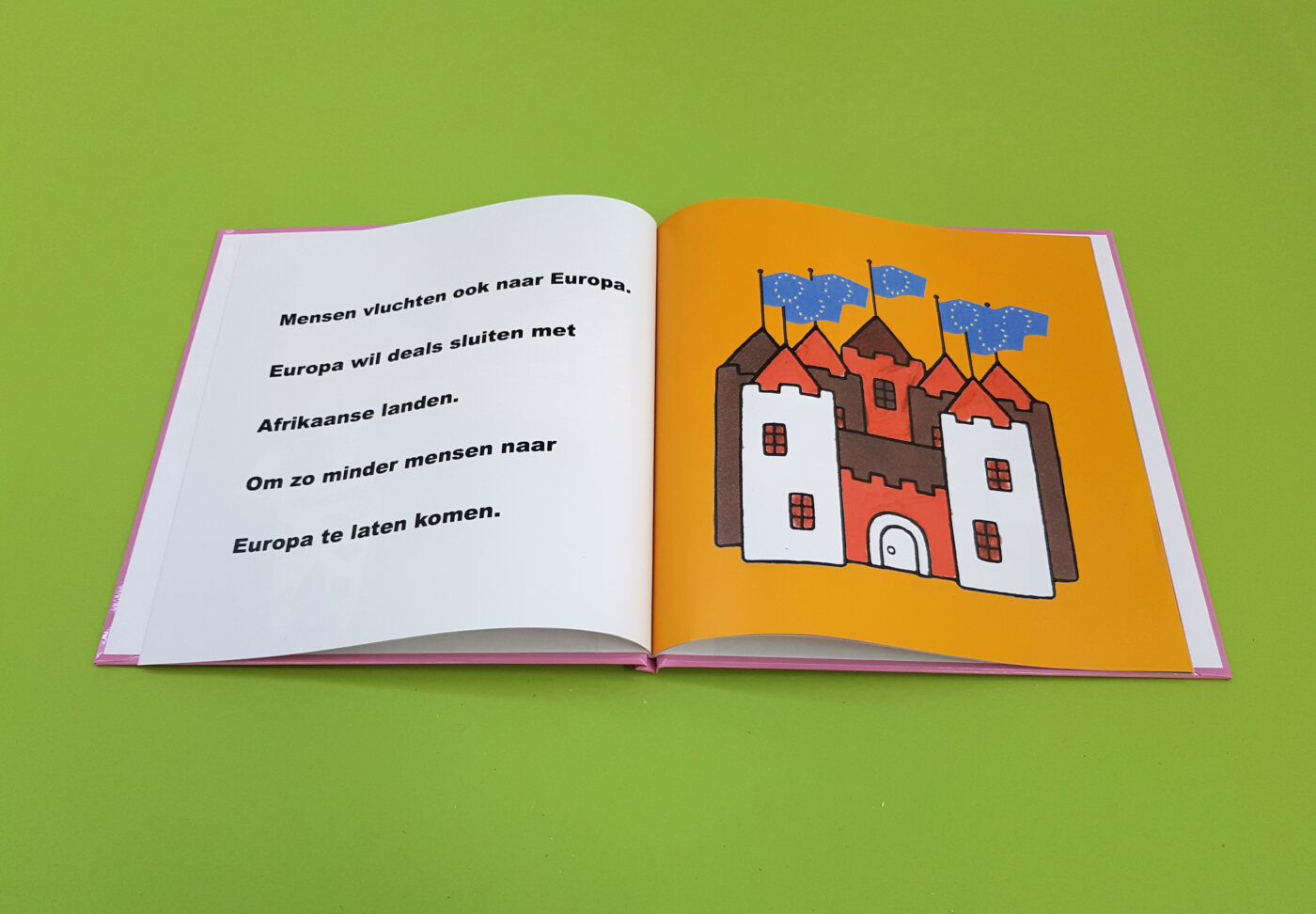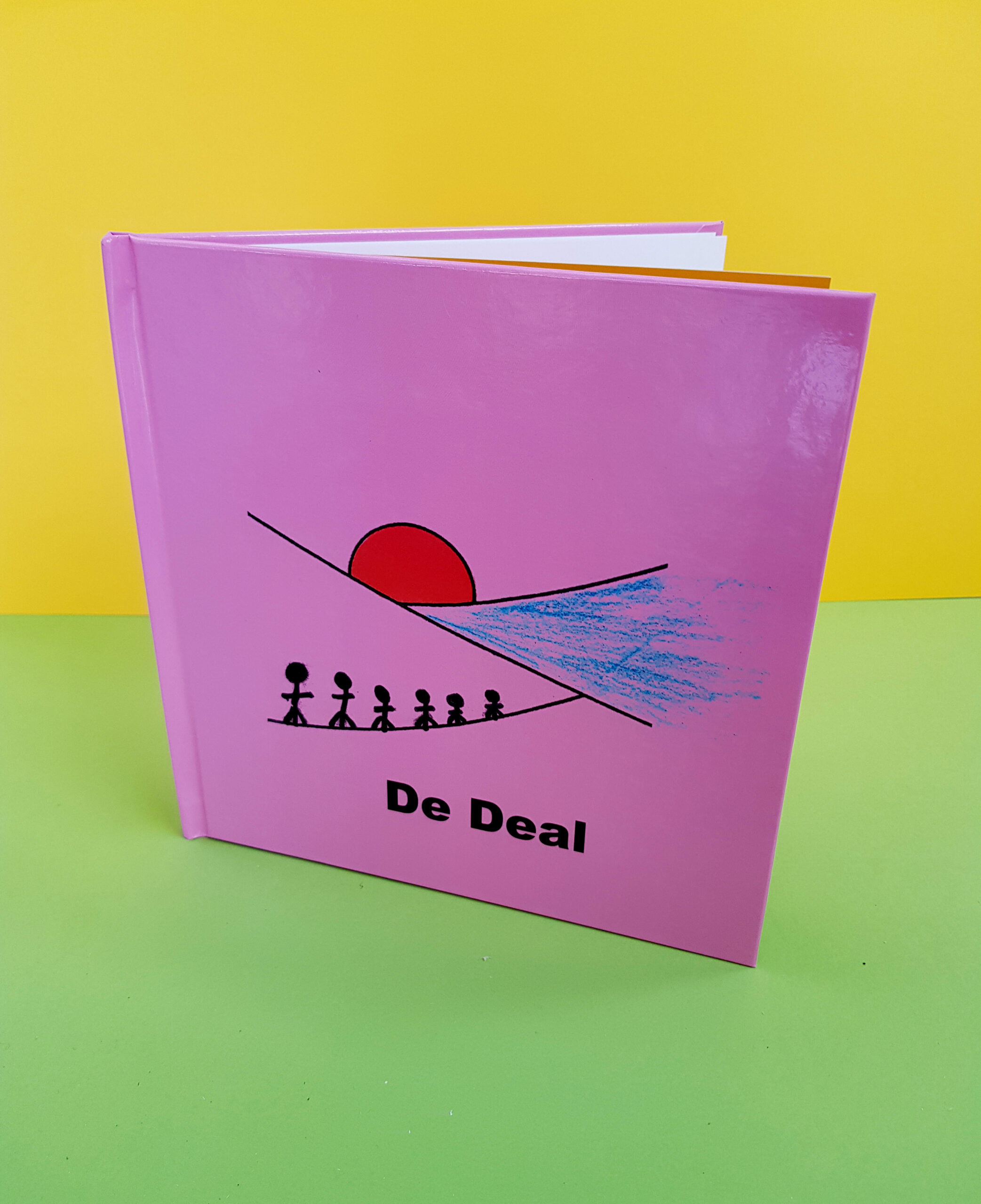Expanding the Notion of the Constituent Museum: On the Practices of Framer Framed
Inspired by a simple question: what would happen if museums put relationships at the center of their operations? This central question inspired the publication of the edited volume The Constituent Museum: Constellations of Knowledge, Politics and Mediation. In this essay we explore how the concept of a constituent museum applies to Framer Framed, an institution without a permanent collection, in order to analyse and better understand the ideology and practices of one’s own cultural and artistic production. How does an institution encourage critical reflection on how it fits within the socio-political context it operates in?
Text by Carola Vasileiadi
February 12, 2022
When first entering Framer Framed, one will become surprisingly present in a vibrant, open, and welcoming space. The visitor could walk into a conference on climate justice organised by artists, scientists, activists, and local communities, and they will be invited to join in and listen. On another day, while the visitor is looking at the current exhibition of videos and pictures made together with cultural institutions and local participants, others might pass by with materials to build the new installation opening soon. Simultaneously, a migrant community may be upstairs working on their art practices while singing along with some music. In the office, people are brainstorming about a new educational project for children. During a visit to Framer Framed, one will soon realise that this public space encompasses more than bringing about exhibitions that welcome visitors as just viewers in a museum. On the contrary, one is invited to join in, not only to listen but also to partake in conversations, ask questions, actively explore together in the space, and contribute to the value of the artistic work by sharing own knowledge and perspectives.
Thinking through the Practices of Framer Framed with the Concept of a Constituent Museum
Framer Framed describes itself as a cultural space or a social platform for contemporary art, visual culture, and critical theory and practice without a permanent collection. The ideology behind the practices of this local-based institution can be better understood by exploring alternative and extended conceptualisations of a museum. This article will do so by discussing the concept of the constituent museum that is outlined within the book The Constituent Museum: Constellations of Knowledge, Politics and Mediation. A Generator of Social Change (Valiz, 2018). By describing communal and artistic projects alternating with theoretical analyses of cultural institutions, the book offers opportunities for conceptualising the identity and design of one’s own institution. Thinking through the structure and practices of Framer Framed as a constituent museum allows for reflection on its projects in the past, present, and future that are realised in collaboration with various actors from across a diverse, established social network. Framer Framed encourages a continuous critical reflection on how the institution fits within the socio-political context in which it is situated. By exploring how this way of thinking translates into its local based activities in Amsterdam, one can come to a deeper understanding of what Framer Framed means and aims for. Through this article, an attempt is made to shed light on the societal value of creating space in the city for critical, cultural, and artistic institutions who put its community needs as a priority of their practices.
Constituency
To get a deeper understanding of the relational practices of Framer Framed, one should get a feel for the concept ‘constituent’. A constituency can be understood as ‘a part of the whole’. The concept also signifies a representative, or a voter, whereby the concept becomes immediately positioned in relation to the institutional and political structures of the state. The concept in this sense of the word is reminiscent of the power relations that underlie our democratic society. The way in which a constituency is applied in relation to museums or cultural institutions can therefore be better understood by placing it in the socio-political context of contemporary society and by considering the power relations between citizens and the state within this context. Citizens (constituents) form a part of society (the whole), with a certain position of power and authority in relation to the state. Our position and social status are shaped by deeply-rooted societal forces through which some become overlooked or ignored while others are overrepresented and predominating public discourse. Within this field of tension, some must put in more effort than others to create a platform to be heard and exert societal influence. In this context, a constituency may refer to a community or group in society that together creates a space to express themselves and advocate for the needs of their community. All such constituent voices are part of what makes society in the past, present, and future. By creating a platform for their voices to be heard, the established way of looking at the world is shuffled, critically analysed, and a space is created that allows for transformation.
Relationships at the Centre of Practices
The core taking from The Constituent Museum is for museums to put relationships at the centre of their operations. This premise is based on the ideology of learning from each other and a belief in the power of collaboration. The practices of Framer Framed reflect this ideology. The projects that come into being within the institution are an expression of collaborative practices of all actors involved. Therefore, the institution becomes not a space to teach others but offers a platform to learn together. The collaboration between Framer Framed and different actors can be exemplified by the Court for Intergenerational Climate Crimes (CICC) that is co-produced with Indian academic, writer, lawyer and activist Radha D’Souza and Dutch artist Jonas Staal. Within the court, public hearings are organized to prosecute intergenerational climate crimes. The hearings include evidentiary testimonies and presentations from individuals and collectives. The CICC can also be used by various actors that are working in the field of climate justice including not only artists and curators, but also, for example, researchers, NGOs, residents, minority groups, activists, individuals, and diverse institutions at a local, regional, national, and international level. The actors exchange and develop knowledge through various activities such as workshops, lectures, debates, and collaborative research. To this end, Framer Framed offers a social platform to combine the knowledge, networks, and resources of various actors.
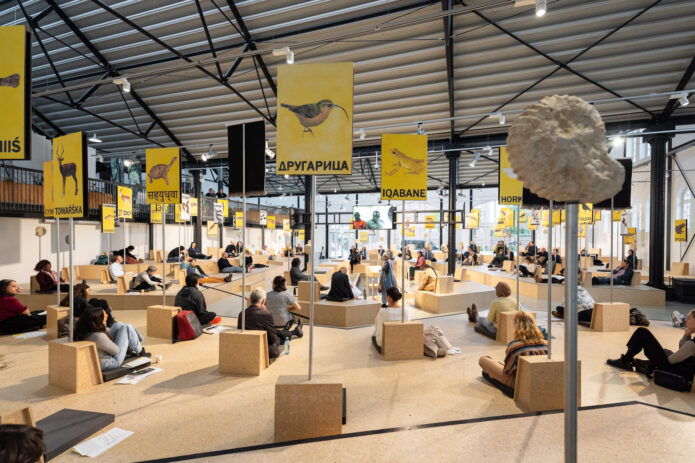
Court for Intergenerational Climate Crimes (2020-2021) by Radha D’Souza & Jonas Staal at Framer Framed. Photo: Ruben Hamelink
As Framer Framed puts relationships at the centre of its practices, an alternative way of thinking about the creation and sharing of knowledge within the framework of the constituent museum is revealed. Framer Framed is convinced that critical and alternative knowledge can be created and shared only through collaboration with diverse actors and local communities. Through this collaborative and open process of knowledge creation, power relations become exposed; who holds the knowledge and who has the right to share this knowledge with others? Together, the social network of Framer Framed forms a collective to learn and then make art together. The art projects within the institution are not totalizing and predefined, but rather created by sharing knowledge, discovering, creating, and becoming together. While holding contested societal power structures in mind, Framer Framed is committed to offering a space for joint development instead of presenting itself as an educational platform that only transfers their own acquired knowledge. Consequently, a democratic institution emerges that consists of a diverse and interdisciplinary network.
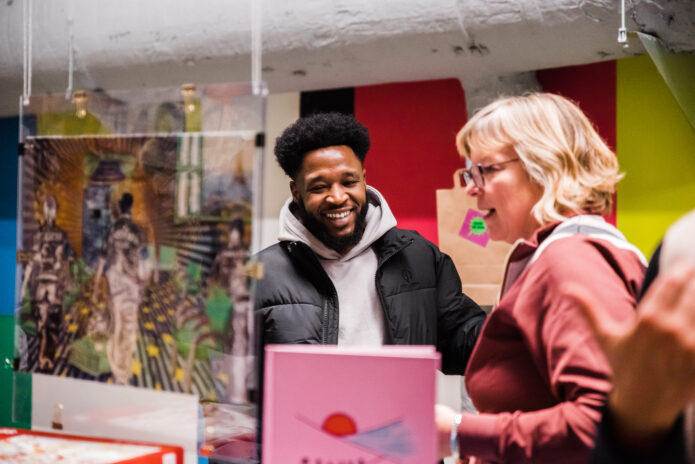
Members of We Sell Reality giving tours through the exhibition Powerplay – Deals All Over during the Museum Night. Photo: © Seye Cadmus / Framer Framed
Counter Knowledge Creation in Solidarity
In response to societal developments, a constituent museum can offer a backlight to public discourses by providing alternative perspectives of looking at the world. With societal, structural forces in mind, Framer Framed acknowledges that underrepresented groups form a necessary part of meaning making of society as a whole. Therefore, the institution provides a public space for self-representation by marginalized groups to reflect on their experiences of societal issues. By highlighting underrepresented voices, different sounds conduct through the space, offering alternative narratives opposed to the so-called ‘mainstream narratives’ or ‘common sense’. The creation of critical counter knowledge in solidarity within a constituent museum can be exemplified by the collaboration of Framer Framed and the art collective We Sell Reality. The collective consists of social designers, most of whom are refugees in limbo. Since the beginning of 2021, Framer Framed has facilitated a space in Amsterdam-Oost for We Sell Reality to gather each week and work on an art exhibition. Framer Framed recognizes that undocumented migrants form a marginalized and rather invisible group in society. Often, undocumented migrants are negatively represented in public discourse, without consideration for their everyday life struggles in the host society. By facilitating a welcoming space to make art and share their personal stories with an audience, Framer Framed contributes to the formation of a counter narrative that goes beyond the dominant, negative representation of undocumented migrants.
In their exhibition Powerplay – Deals All Over, a toyshop installation by We Sell Reality in Framer Framed, migration deals are exposed that are made by the European Union to exclude refugees from entering the EU. Through their colourful and playful art pieces, the visitor becomes attracted to the space and is invited to take a closer look. In this way, the visitor becomes confronted with the deeper layer of the toys and discovers the story that underlies its approachable and open appearance. The visitor is thereby encouraged to start the conversation with the artists and find out more about their situation. Therethrough, Framer Framed can play an important role in creating a space for dialogue between those of opposite worlds. By sharing stories and criticizing the migration policies through their art, the collective aims to generate new patterns of conversations with the visitor. By questioning the societal structures together, the visitor can come to a better understanding of the contested position of undocumented migrants within society and see the world through the eyes of the other.
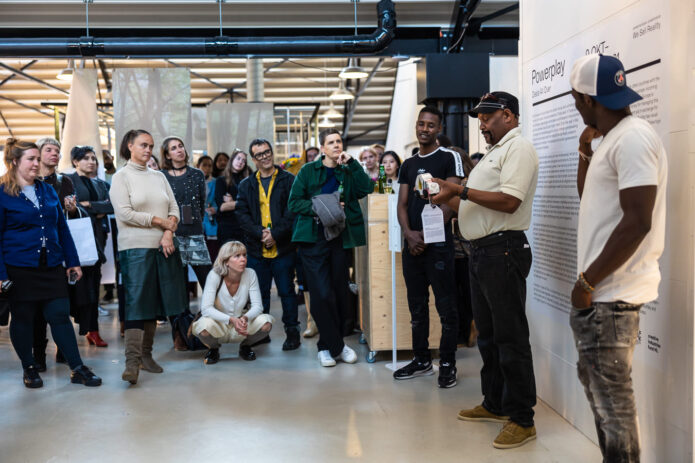
Exhibition opening Powerplay – Deals All Over (2021) by We Sell Reality. Photo: © Maarten Nauw / Framer Framed
It must thereby be recognised that every visitor has a unique cultural and social background, and a personal story to share. To get a grip on the visitor’s reaction and understanding of the practices it interacts with, they must be placed in the socio-political context in which they find themselves. The visitor can contribute to the meaning of the project by sharing their own perspective and knowledge. Each perspective can contribute to a new understanding of a societal phenomenon and each vision broadens and sharpens our established perspectives on the world. Through sharing stories and making sense of the world together, despite troubling structural inequalities and positions of power, groups are encouraged to rethink what seemed to be formed and fixed structures. By critically reviewing dominant discourses, one becomes aware of the shared history, present struggles, and future prospects of society as a whole. In this way, the visitor of a constituent museum is not only informed, but also encouraged to reflect and critically rethink their way of looking at the world. By creating a public space for dialogue, Framer Framed can contribute to the democratization of art and its implementation in everyday life and fulfil an important function on creating public awareness through it. The visitor is therefore not seen as a passive recipient and it is not just the institution itself, but the people together, including the visitor who makes Framer Framed such a vibrant and meaningful artistic space.
Being Aware of Our Own Position Within Society and Our Available Resources
While critically reflecting on societal forces, power relations and representations, one must recognize their own social status, resources, and social network. It is therefore necessary for Framer Framed as an institution to continuously reflect on its own position within society. A constituent museum denounces power relations while realizing that its own authority as an institution is also a form of power. It is therefore important to be transparent about the degree of power of one’s own institution through which access and resources are provided. Based on the philosophy to facilitate a social platform to create counter knowledge to bring about social change, institutional recourses are shared with marginalized communities. Effort is put in the redistribution of these recourses among communities in the city that could use them.
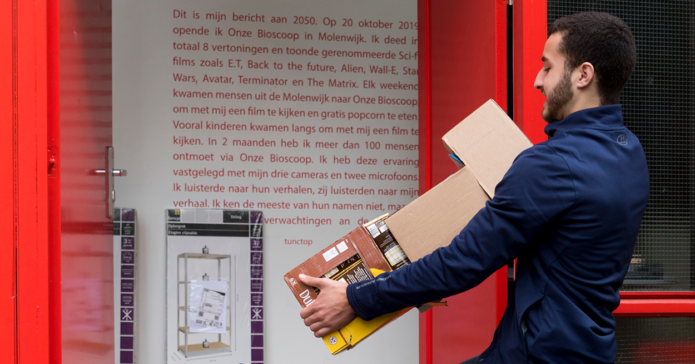
Community organiser Nizar El Azouzi – the Food Bank Project (2020) at Werkplaats Molenwijk. Photo: Betul Ellialtioglu / Framer Framed
Framer Framed’s attempt at redistribution among communities, can be exemplified by the Food Bank project (2020) at Werkplaats Molenwijk. This artistic space in Amsterdam-Noord operates for, and by neighbourhood residents and can be characterized by its collaborative projects that arise from the situation and need of the residents. During the pandemic, some residents were struggling with their food supply. A resident involved in Framer Framed was aware of this need from the community and took the initiative to approach organizations that are against food waste and redistribute food in the city. Framer Framed started to brainstorm on possibilities to find a solution at Werkplaats Molenwijk and work together with active residents. Many residents wanted to volunteer to organise a Foodbank. Soon, support was also offered by the Buurtvereniging, Blije Buren, The Neighbourhood Association and the municipality that brought their own recourses. By bringing the community together in Werkplaats Molenwijk and providing a public space to meet, Framer Framed took upon the role to mediate between different local-based social institutions, restaurants, shops, and distributors, connect them, and put their own available recourses to use. Through the established local-based social network, meaningful relations within the neighbourhood are build and local needs are met. While Framer Framed redistributes its own recourses by offering a public space and social network to be of benefit of those in need, effort is put to empower the community and its own recourses. Framer Framed started to support the community, but eventually the residents could run the organisation independently at a new location with more abilities to grow. The food bank project thereby presents how the public space of Werkplaats Molenwijk can transform to serve as a constituency and empower local communities.
Read more about the food bank project
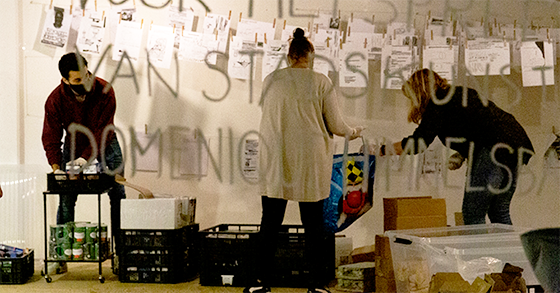
Food distribution at the Werkplaats Molenwijk. Photo: © Ilya Rabinovich / Framer Framed
The building of a Framer Framed
The building of a constituent museum plays an important role in shaping and representing its identity. Framer Framed aims to facilitate a public space where everyone, including both the makers and the visitors, feel welcome. Attention is therefore paid to how to make use of the physical space as a cultural ecology that requires participation and full presence of the public in the space. Many museums have a standard collection within the building that represents the continuity of the space. In contrast, Framer Framed as an artistic institution opts for expanded conceptualizations of a museum. It explores the possibilities of a continuous transformation of the physical space that adjusts to the situational context in which it finds itself. Therethrough, the physical space moves beyond being a static building and changes into a cultural ecology that lives and evolves over time. Framer Framed can be understood as a personal, human body that is not static nor a statue, but rather interacting differently depending on the context of the projects. When realizing an exhibition, the message of the makers must be kept in mind and the experience of the space must match with the message of the exhibition. Framer Framed aims to create emancipatory change through the negotiation of the architecture, and the space must adjust to the needs of the specific exhibition and activities taking place. The creation of the space is a continuous and mutually-influencing process between actors, language, behaviour, interaction and presence of the public. The freedom and transformative possibilities of the space allow for ownership of the space by the communities involved.
To prevent the space from becoming static, different exhibitions and activities can simultaneously take place in the physical space. This makes Framer Framed a vibrant public space that evokes a certain reaction and experience for the visitor of feeling shaken, awakened, and focused. While collaborating with different artists and exhibitions at the same time, Framer Framed must constantly be aware on how to divide the physical space and give equal attention to all actors involved. To maintain strong and meaningful relationships with all actors, competition in use of the space should be avoided and everybody should feel heard and appreciated. This tension can be exemplified by the tribunal installation of the Court for Intergenerational Climate Crimes (CICC) in Amsterdam-Oost, a loud and sharp message for climate justice that consumes the ground floor of the building. For this project, with an important message with a societal influence not only on a local, but national and international level, asks for the use of the entire ground floor space. When a visitor enters the building, they cannot avoid being confronted with the message of CICC’s creators. While the CICC is taking place at the ground floor of the building and is immediately visible to the public, the exhibition Powerplay – Deals All Over of We Sell Reality is taking place upstairs, and in the back room. Therefore, more effort must be made to show appreciation of the actors and make their space visible to the public by, for example, putting arrows to guide visitors to the upstairs exhibition, promote the exhibition both through online and offline spaces and opening the exhibition through organizing a public event. Even if the physical exhibition space is smaller, contains less room than others, or when it is only open to the public for a short period of time, Framer Framed must assure that all actors feel their importance for the totalitarian understanding and meaning of the institution.
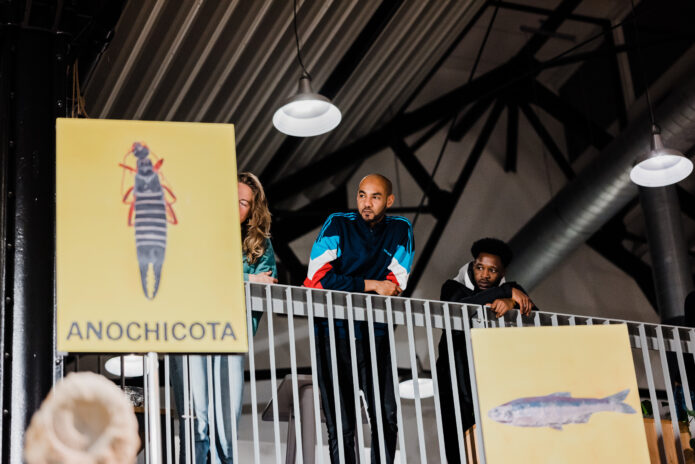
We Sell Reality community watching the Museum Night performances taking place downstairs in between their Powerplay guided tours sessions upstairs. Photo: © Seye Cadmus / Framer Framed
A Continuous, Transformative Work in Progress
A constituent museum might offer hope and opportunities for communities by exchanging knowledge and broadening world perspectives. Framer Framed acknowledges that in collaboration with diverse knowledge-holders such as artists, curators, researchers, activists, residents, communities, institutions, and NGOs, an understanding of the socio-political context of art is created. While being aware of their own recourses and societal powerful position as an artistic institution, Framer Framed opts to create emancipatory change by providing communities ownership of the space and making them feel part of the organization. Nevertheless, there are also challenges to consider. Exemplifying, in the collaboration between Framer Framed and We Sell Reality, Framer Framed opts to encourage their future ambitions and creation of artistic work while not maintaining their dependence and adding to the victimizing discourse of refugees. In building and maintaining relationships with marginalized groups, their personal value and sense of power must at all times be highlighted in order to learn from each other and continue a fruitful collaboration. At all times, their personal strength and abilities must be praised. Moreover, it must be considered that We Sell Reality does not seek recognition as a vulnerable and marginalized group within society. Rather, they are driven to empowerment and humanization by raising their voices as a constituency. Framer Framed must only assist in their creative practices of political resistance, so that the collective can construct a sense of belonging within society themselves.
Another challenge in building and maintaining relationships with actors arises when questioning what happens when an exhibition comes to an end? As Framer Framed is a critical and cultural institution that is open to the public, it must consider the expectations of the visitor and address different topics concerning the current societal context in which it operates. For the institution to maintain its cultural ecology, variety of exhibitions and activities is needed, and the space must be open for continuous transformation. However, as relationships are put at the centre of Framer Framed’s practices, collaboration with the actors goes beyond having an exhibition as the end goal and is instead presented as a work in progress, not the end result. Framer Framed opts to be a welcoming social platform where exhibitions come and go, but relationships with local communities continue, regenerate, hybridize, and contribute to collaborative knowledge creation. Framer Framed therefore moves beyond the concept of a constituent museum to understand its practices as a notion of building a strong, social, and influential social network to create meaningful societal changes. Organizing new projects and activities in collaboration with actors within the established social network is therefore a continuous process of finding out how to cooperate and provide space in the building. Framer Framed realises that relationships come with expectations, and out of satisfied needs might grow or appear new needs that need to be heard. Thereby, the main lesson of the constituent museum for Framer Framed is that while exhibitions are temporary, maintaining relationships is an ongoing commitment to community and societal change.
The Constituent Museum
Constellations of Knowledge, Politics and Mediation. A Generator of Social Change.
The Constituent Museum is inspired by the question What would happen if museums put relationships at the centre of their operation. This publication offers a diverse, rigorous, and experimental analysis of what is commonly known as education, mediation, or interpretation within museum institutions. It takes the visitor not as a passive receiver of predefined content, but as a member of a constituent body, who it facilitates, provokes and inspires. Key issues of the publicaton are reciprocity, activation, structures and negotiation.
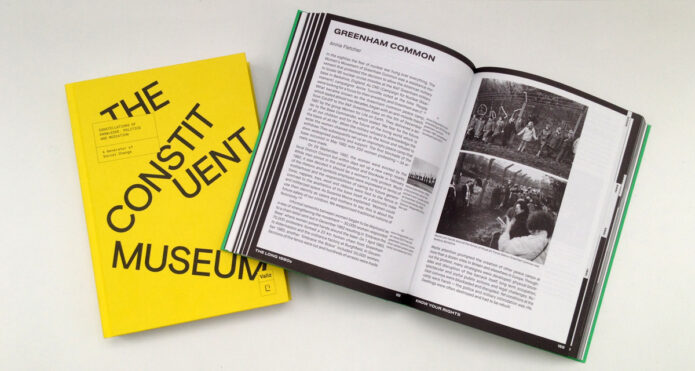
The contents is structured within five parts: Becoming Constituent, Architecture of Use, Pedagogies of Encounter, Distrubuting Ownership in Archiving and Collecting Relationships, essays and case studies are written by 46 contributors from all over the world. The introductory fiction text is written by Irish writer and curator Francis McKee.
Moderna galerija’s activities are presented with projects such as Radical Education, Every Man is a Curator, Museum of Contemporary Art Sarajevo 2000 and Museum Solidarity Lobby by Azra Akšamija in the exhibition Stopover 1:1 and work with the migrants by Bojana Piškur, Tjaša Pogačar Podgornik, Igor Španjol and Adela Železnik.
The editors are members of the confederation L’Internationale: John Byrne (John Moores University, Liverpool), Elinor Morgan (Middlesbrough Institute of Modern Art), November Paynter (Museum of Contemporary Art, Toronto), Aida Sánchez de Serdio (Universitat Oberta de Catalunya) in Adela Železnik (Moderna galerija, Ljubljana).
The book is published by Valiz, Amsterdam.
ISBN 978-94-92095-42-8
- Werkplaats Molenwijk
Links
Collectives / Community & Learning / Migration / Social Practice /
Exhibitions
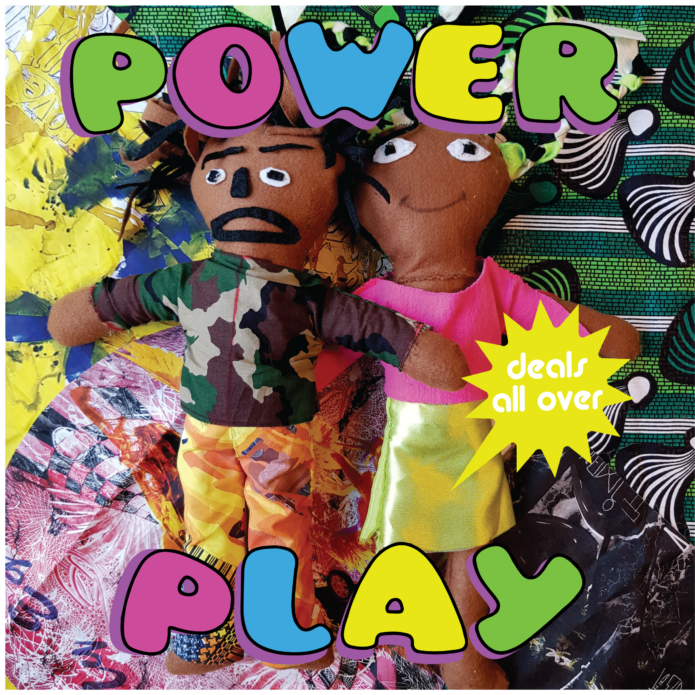
Exhibition: Powerplay – Deals All Over
A colourful installation by collective We Sell Reality

Exhibition: Court for Intergenerational Climate Crimes
A project by Radha D'Souza and Jonas Staal
Agenda
Sudanese Pop-up Restaurant
A dinner event hosted by We Sell Reality
Network
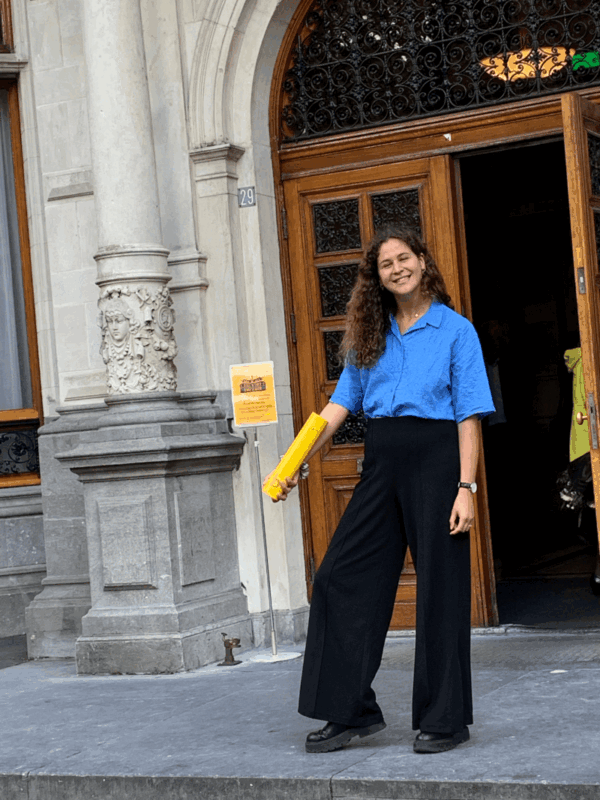
Carola Vasileiadi
Researcher
Magazine


A food bank at Werkplaats Molenwijk, Amsterdam


